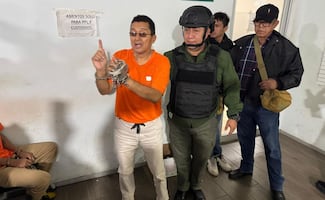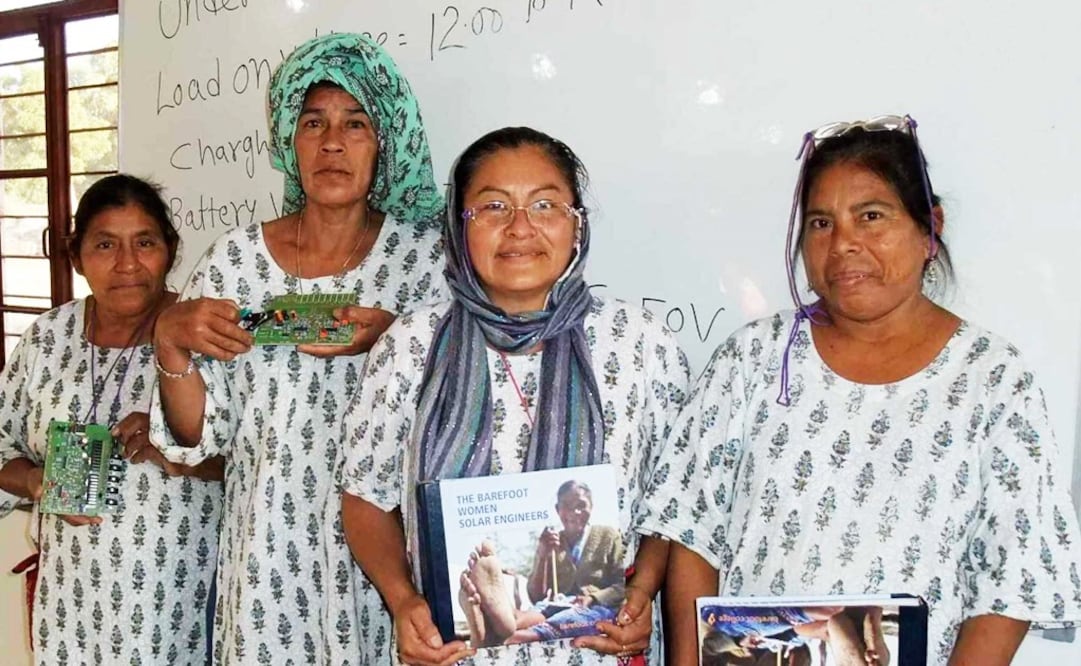Más Información

Artículo 19 condena prisión domiciliaria contra periodista en Veracruz; imágenes lo muestran esposado rumbo a audiencia

Así luce la zona cero del Tren Interoceánico a dos días de la tragedia; medios caminaron 7 km para llegar al lugar del descarrilamiento
Norma Guerra Ramos, Rosa Elvia Hernández, María Aidé López
and Olga Lilia Pimentel are known as the “solar grandmothers”, four indigenous women who were trained in India in solar energy, who would later set up electricity in their town of 149 inhabitants, which doesn't have access to traditional electricity as it is an island.
Their adventure began in 2013, when Cachimbo , also known as Isla de León , was practically destroyed by hurricane Barbara . The tragedy was seen in television by the founder of the Barefoot College, Bunker Roy , a famous Indian activist that trains women from rural communities all over the world, and helps them become agents of change.
After being personally selected by Bunker Roy , Norma as her neighbors traveled to Lithonia, in India , on October 2013 ; after six months they returned ready to install solar panels, put together led lamps, and portable flashlights, in order to improve their lives.
During their stay at Barefoot College , the four grandmothers from Oaxaca built 120 solar packages. Each one contained three lamps, a portable flashlight, two solar panels ; a 10 watts one, which feeds the flashlight and another one, 40 watts, to give energy to the other three lamps.
A difficult learning process
A boat, two buses, a truck, and a horse in a lapse of 29 hours are the vehicles that Norma uses to leave the island, in San Francisco Ixhuatán , in the limits with Chiapas , to arrive in Paso del Tigre , in Guidxixú or The Land of the Earthquakes, in the limits of the Mixe Zapoteca mountain range .
Norma
is a fisher, her body is used to hard work at sea and in the sun, although not to ride a horse for two hours and cross seven kilometers in the mountains; even then, the hope to illuminate 10 houses with solar energy in the Paso del Tigre or Tres Marías give her energy.
After the two hour journey, the mules carrying the 11 equipments arrive tired to Tres Marías and Norma as well; she won't surrender to tiredness and begins to open the packages to start with the process.
The inhabitants, over 50 people, welcome her with joy, they offer her food and a hammock to rest, but she only accepts the food and then starts working. She gives instructions and the men obey. In less than one hour, Norma electrifies the first house in the community.
And she keeps going with other two homes, until the sunsets and she has to stop. In the middle of Vicente López Palomec and Virginia Castro Pérez backyard, the woman is surrounded by children and adults, and she begins to tell them about her adventures while she was in India .
“The most difficult part was the language, everything was in English, we communicated with the teachers through signs, we memorized everything. In the beginning, we cried because we couldn't weld the motherboard. It was even harder for me because I could see very little because I had flesh in the eyes, but thank god, I had surgery done there and I could finish the training. We also missed our family, but in the end, it was worth it. Look at me! I never thought I would come to the mountain to give you electricity”.
Since she began working as a solar engineer, she has set up electricity in over 100 homes in Ixhuatán and Chiapas , although she is still crossing the sea when they ask her to set up electricity.
gm
Noticias según tus intereses
[Publicidad]
[Publicidad]












